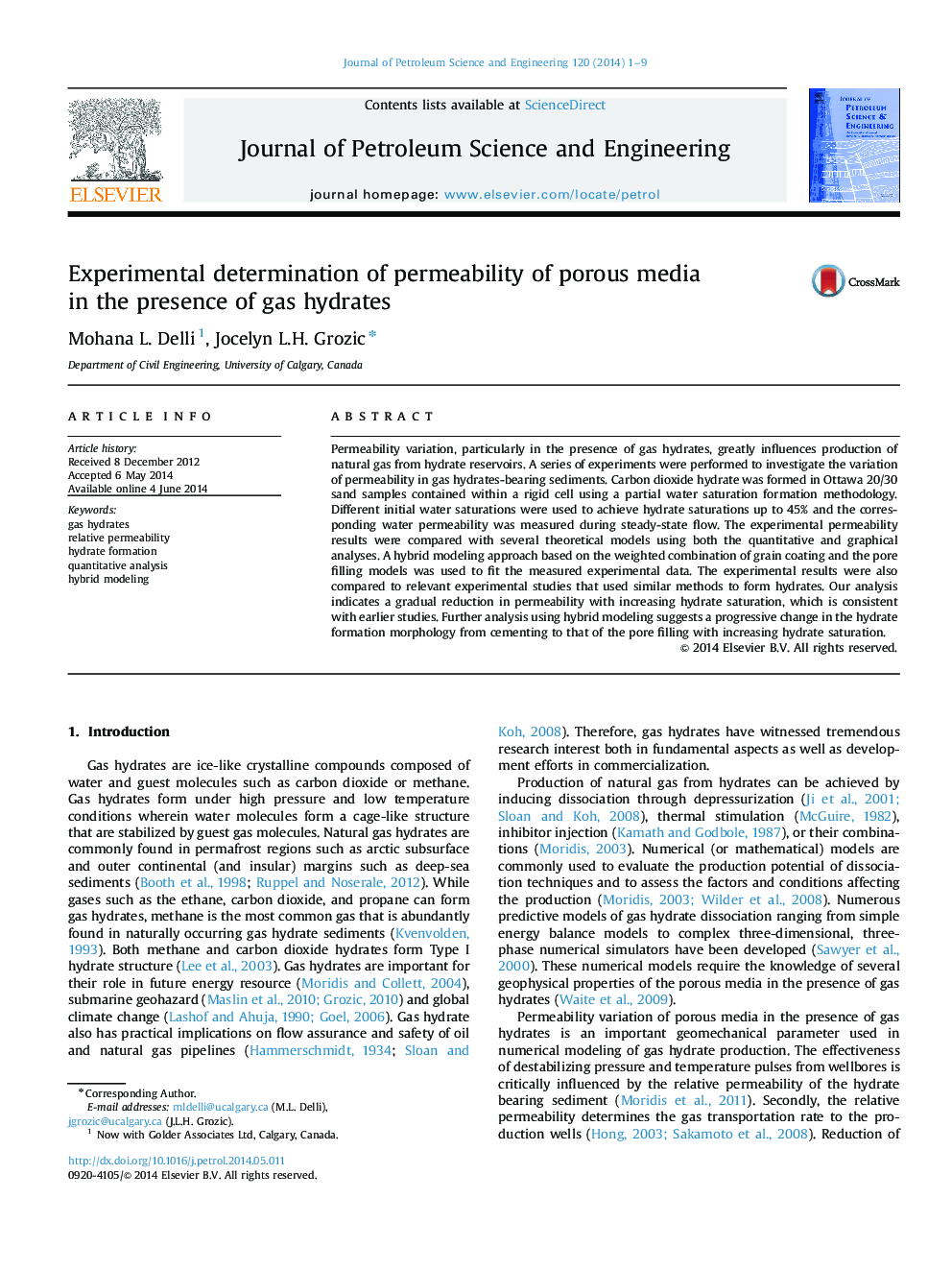| Article ID | Journal | Published Year | Pages | File Type |
|---|---|---|---|---|
| 1755026 | Journal of Petroleum Science and Engineering | 2014 | 9 Pages |
•Permeability of gas hydrate (CO2) bearing Ottawa 20/30 was measured experimentally.•Normalized mean squared error and geometric error variance was used as performance measure.•Theoretical models with lower error measures agreed better with the measured experimental values.•Better modeling using hybrid pore filling/grain cementing model is introduced.•Results are compared with previous experimental studies with similar hydrate formation method.
Permeability variation, particularly in the presence of gas hydrates, greatly influences production of natural gas from hydrate reservoirs. A series of experiments were performed to investigate the variation of permeability in gas hydrates-bearing sediments. Carbon dioxide hydrate was formed in Ottawa 20/30 sand samples contained within a rigid cell using a partial water saturation formation methodology. Different initial water saturations were used to achieve hydrate saturations up to 45% and the corresponding water permeability was measured during steady-state flow. The experimental permeability results were compared with several theoretical models using both the quantitative and graphical analyses. A hybrid modeling approach based on the weighted combination of grain coating and the pore filling models was used to fit the measured experimental data. The experimental results were also compared to relevant experimental studies that used similar methods to form hydrates. Our analysis indicates a gradual reduction in permeability with increasing hydrate saturation, which is consistent with earlier studies. Further analysis using hybrid modeling suggests a progressive change in the hydrate formation morphology from cementing to that of the pore filling with increasing hydrate saturation.
